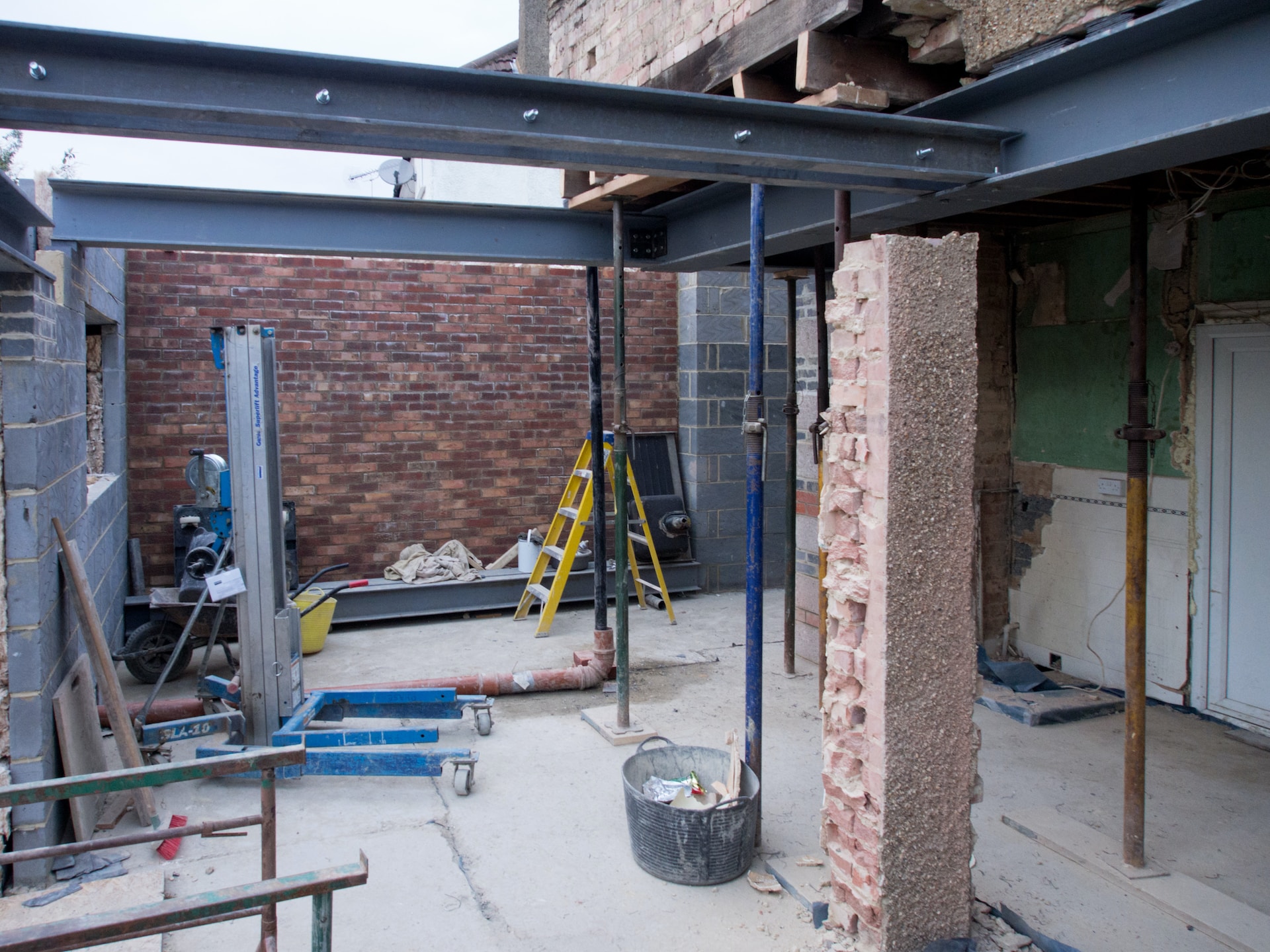Home improvements can place a dent in your finances. But you don’t have to deplete your savings to fund much-needed repairs or upgrades. If you have a sizable amount of equity in your home, consider using a cash-out refinance to cover the costs.
But first, it’s vital to understand what a cash-out refinance is, how it works and the types of improvements you can cover with the funds. You should also be mindful of the benefits and drawbacks of this funding source, what you’ll need to qualify and how to choose the right lender.
What is a Cash-Out Refinance?
A cash-out refinance is a type of mortgage loan that lets you refinance your current mortgage for an amount greater than you currently owe. You’ll keep the difference in cash and resume payments on the new loan.
How a Cash-Out Refinance Works
To illustrate how a cash-out refinance works, assume you owe $175,000 on your home, and it’s currently worth $385,000. You inquire with a lender about a cash-out refinance, and it approves you to tap into 80 percent of your home equity. This means you can access $133,000 ($385,000 * .85 – $175,000).
At closing, the lender will pay off your existing mortgage, and you’ll get a new $308,000 home loan ($175,000 + $133,000) that includes the amount you owe on your home and the equity you pull out. You’ll also receive the funds you pull out, or $133,000, minus closing costs and can use them however you see fit.
Can You Use a Cash-Out Refinance for Home Improvement?
As mentioned above, lenders generally don’t impose spending restrictions on the funds received from a cash-out refinance. So, you can use the funds to cover the cost of home improvements.
What Types of Home Improvements Can You Use the Funds of a Cash-Out Refinance For?
The proceeds from a cash-out refinance can be used to cover just about any repair or improvement on your property. For example, common home renovation projects include flooring installation, kitchen and bathroom remodeling, home office additions, outdoor pool installation, and basement finishing. Some also use the funds to make their homes more energy efficient or to improve curb appeal.
Should You Refinance Your Mortgage to Pay for Renovations?
It depends on several factors. Refinancing your mortgage to pay for renovations could be a smart financial move if:
- You meet the lender’s eligibility guidelines and qualify for a competitive interest rate.
- You’ll add substantial value to your home by renovating it.
- You know the exact amount you need to cover home improvement or repair costs.
- You have wiggle room in your budget to afford a higher monthly mortgage payment.
- You have an emergency fund that could be used instead of home equity if you need cash in the future.
However, you should probably consider other funding sources if:
- Your credit score is on the lower end.
- You need fast funding to pay for renovations.
- You’ll get a much higher interest rate by refinancing your home.
- You want to complete several home improvement projects over an extended period.
- You qualify for a 0% interest credit card and can cover improvement costs before the introductory period ends.
The Benefits of Using a Cash-Out Refinance for Home Improvement
Here are some key advantages of using a cash-out refinance to fund home improvements:
- Simple to manage: Instead of juggling two payments, you’ll get a single monthly payment to work into your budget.
- Tax-free: The equity you pull out of your home is exempt from federal or state taxation.
- Competitive rates: Generally, the interest rate on cash-out refinances is lower than you’ll get with an unsecured personal loan or credit card.
- Protects reserves: Instead of depleting your savings accounts, you can use a cash-out refinance to cover renovations and leave those funds intact for financial emergencies.
- Flexible use: If you complete home improvement projects and have funds remaining, you can use them however else you see fit.
- Tax benefits: You may be allowed to deduct mortgage interest on a cash-out refinance. (Consult with a tax professional to learn more).
- Improve your home value: Making upgrades to your home can increase its value and boost your earning potential if you sell in the future.
- PMI cancellation: A cash-out refinance could lead to PMI cancellation if it brings your loan-to-value (LTV) ratio to 80 percent or lower.
The Risks of Using a Cash-Out Refinance for Home Improvement
- Collateral requirement: Like other mortgage products, cash-out refinances are secured by your home, and defaulting on the loan means you could face foreclosure.
- Borrowing costs: Most cash-out refinances come with closing costs between 2 percent and 5 percent of the loan amount.
Refinancing Your Mortgage Before vs. After Home Renovations: What Is Better?
There’s no one-size-fits-all answer to this question. Deciding if you should refinance your mortgage before or after home renovations depends on several factors. These include your cash flow, the amount of equity you have in your home, your loan term, current interest rates and projected renovation costs. Here’s a closer look at each factor:
- Cash flow: Are your finances in solid shape, or do you struggle to cover monthly expenses? If you can comfortably afford your bills each month and have wiggle room in your budget, moving ahead with refinancing to cover renovation costs could be ideal. Otherwise, you may want to hold off until you get a handle on your finances. Or you could use a portion of the funds you pull out to consolidate high-interest debt and get more affordable debt payments. Be mindful that your mortgage payment could be higher depending on the interest rate and term you receive, so be sure to factor in the increase before moving forward.
- Home equity: How much equity do you have in your amount? Is it a generous amount or a figure barely above the lender’s minimum equity requirement? A larger amount of equity means you can typically access more funds. But if you don’t have much equity in your home, consider refinancing after renovations to possibly qualify for more funds if your home value improves.
- Loan term: Are you seeking a longer or shorter loan term? If it’s the latter, refinancing before renovations could be best. You’ll generally get a lower interest rate and could use the cost savings to fund renovations.
- Current interest rates: A lower interest rate could mean a more affordable monthly payment if you refinance before renovations. You can also use the funds you save to help cover home improvements.
- Projected renovation costs: If you can’t afford to pay for renovations out of pocket, it may be best to refinance before you move forward. Or you may have to resort to more expensive forms of financing.
What Else Could You Use the Funds from a Cash-Out Refinance for Aside from Renovations?
Beyond home renovations and repairs, funds from a cash-out refinance are often used to consolidate high-interest debt and cover unexpected expenses. Some homeowners also use the loan proceeds to cover higher education costs, start a business, capitalize on investment opportunities and pay for hefty medical bills.
What Do You Typically Need to Qualify for a Cash-Out Refinance?
The eligibility requirements vary by lender. However, below are some general guidelines to keep in mind to have the best chance at getting approved for a cash-out refinance with a competitive interest rate and attractive terms.
Credit Score
Most lenders require a minimum credit score of 620. However, A few lenders will allow the maximum loan to value available with a score as low as 500 for a cash-out refinance.
Home Equity
You’ll also need a sizable amount of equity in your home to qualify for a cash-out refinance. Again, the exact amount varies by lender, but the lender will determine how much equity you have by having a professional appraisal done. The appraised value is then deducted from your current mortgage balance to come up with a figure.
If you’re looking to do a cash-out refinance with a conventional loan, you’ll generally need to leave between 20 percent of the equity in your home. FHA loans also have a 20 percent equity requirement for cash-out refinances. But if you refinance with a VA loan, you can borrow up to 100% of your home’s equity.
Debt-to-Income (DTI)
Lenders also consider your debt-to-income (DTI) ratio when you apply for a cash-out refinance. It’s calculated by dividing the sum of your monthly minimum debt payments by your monthly gross income. So, if you pay $3,000 to creditors each month and earn $9,000, your DTI is 33 percent. You’ll typically need a DTI of 50 percent or lower to qualify for a cash-out refinance. Some lenders may allow a back-end DTI of 57%.
Things to Consider When Choosing a Lender for Your Cash-Out Refinance
When evaluating cash-out refinance lenders, be sure to consider the following:
- Reputation: What are past and current customers saying about the lender?
- Accessibility: Is the lender licensed to do business in your state?
- Eligibility criteria: Do you meet the lending guidelines?
- Loan terms: Do the loan terms and monthly payments work for your budget?
- Fees: Are the fees comparable to what you’ll find with other lenders?
- Interest rates: Are the interest rates competitive?
- Ease of application: Can you apply online, or do you have to visit a physical branch?
- Customer service: Is customer support available during hours that work for your schedule?







